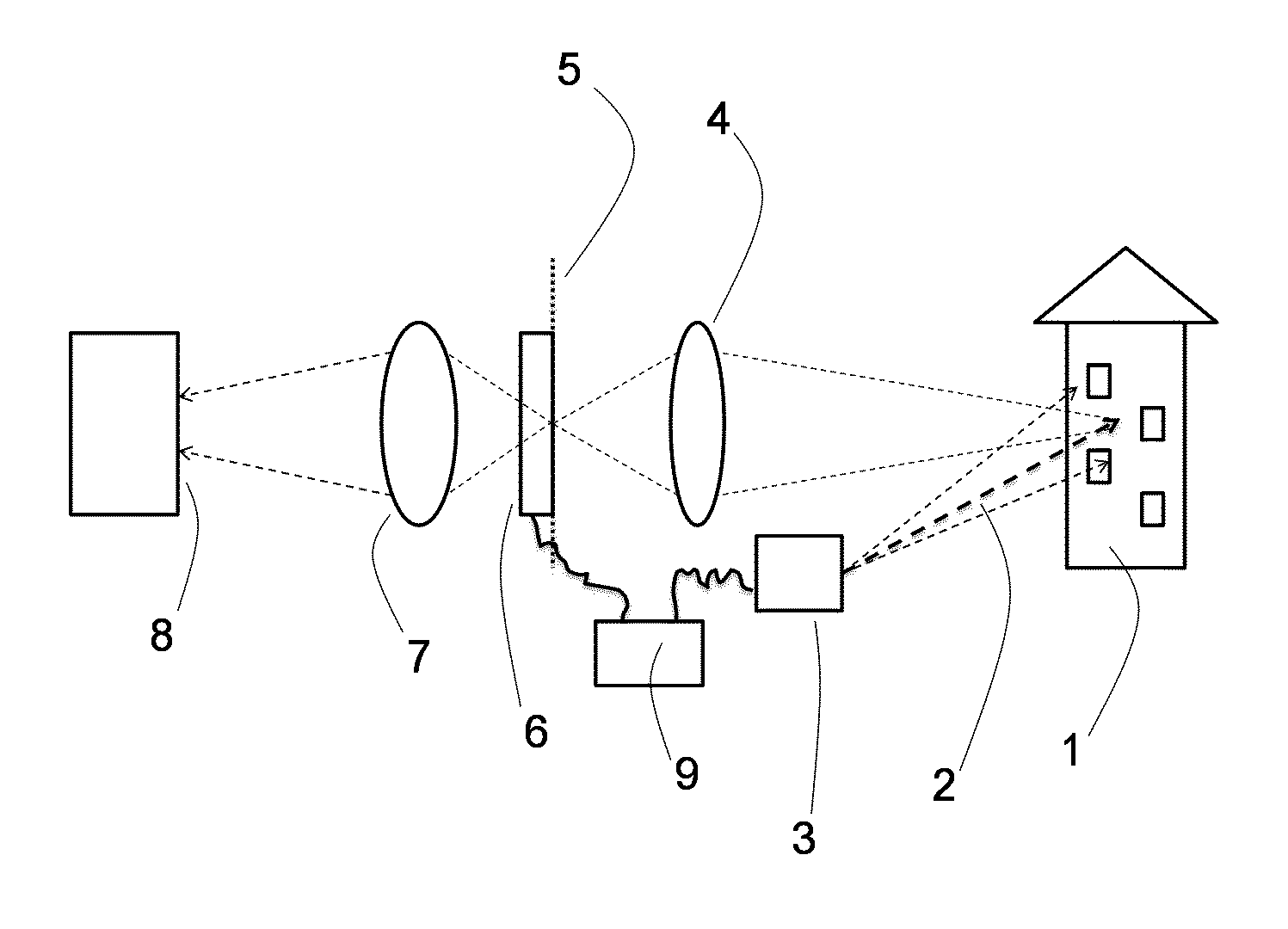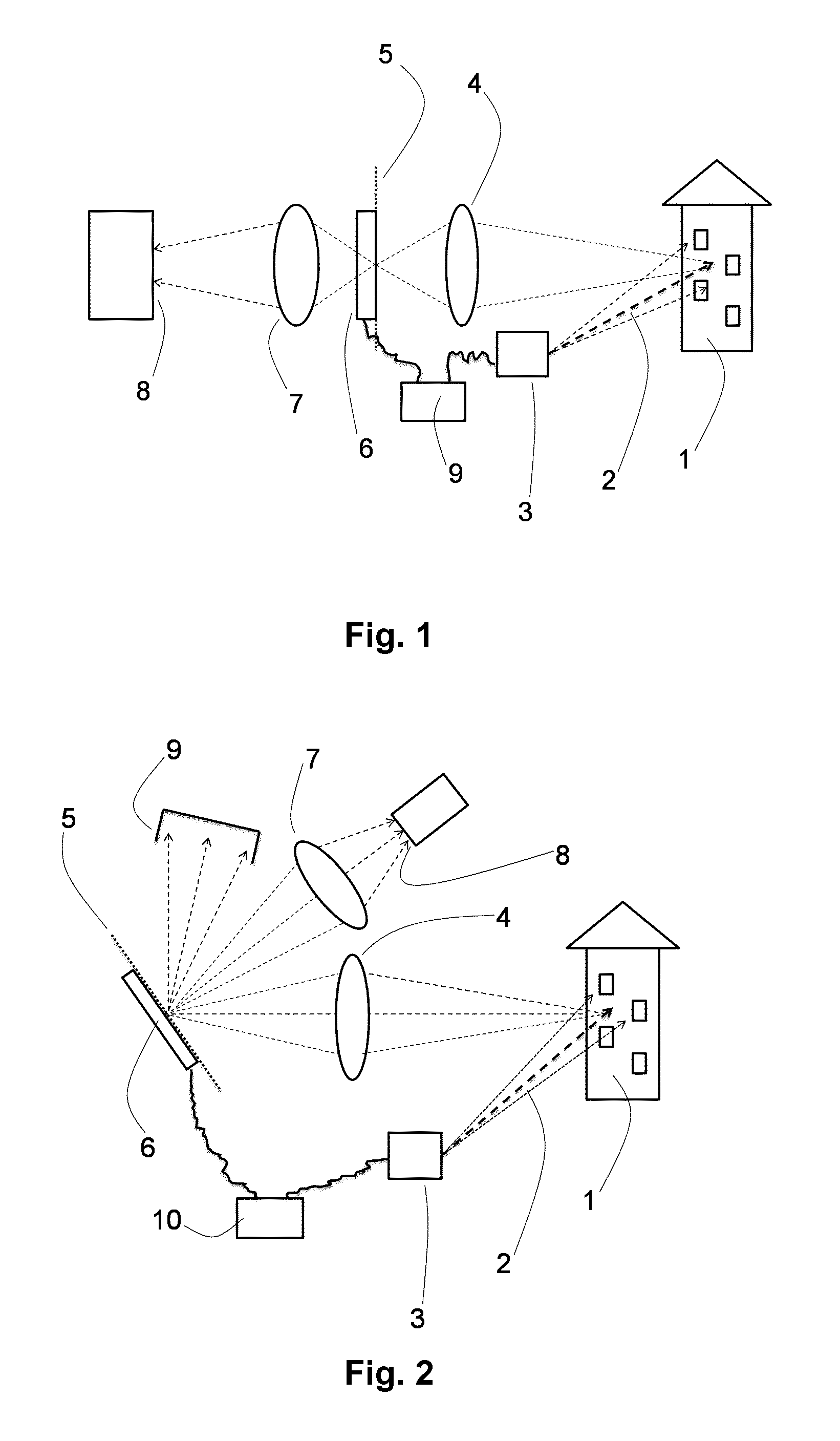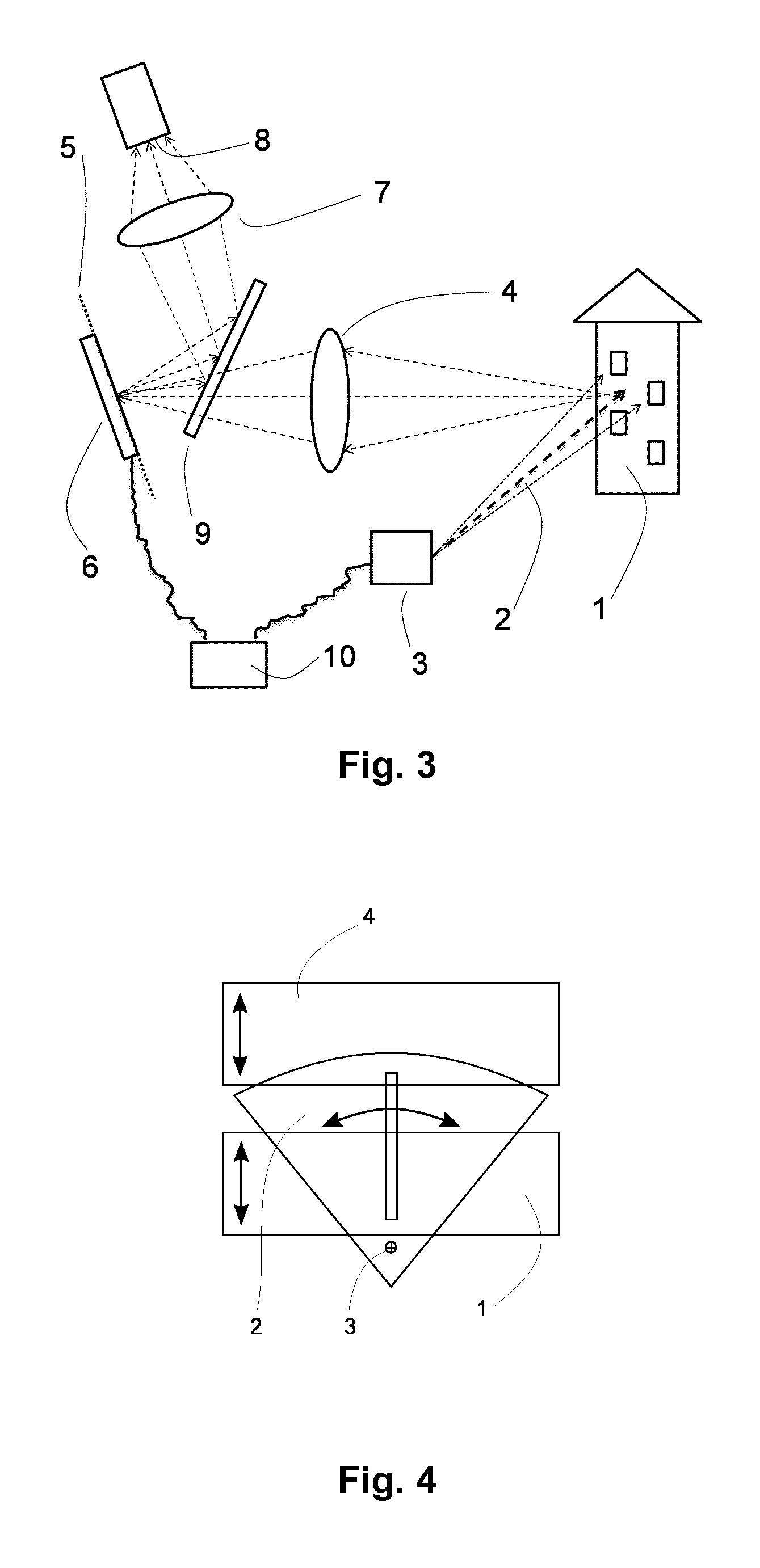Spatially selective detection using a dynamic mask in an image plane
a dynamic mask and image plane technology, applied in the field of three-dimensional laser scanners, can solve the problems of sluggish performance, noisy and expensive instruments, and voluminous objects, and achieve the effect of less critical design, less voluminous objects, and less voluminous objects
- Summary
- Abstract
- Description
- Claims
- Application Information
AI Technical Summary
Benefits of technology
Problems solved by technology
Method used
Image
Examples
Embodiment Construction
[0042]The main aspect of the present invention concerns an additional component of the light detection system of a three-dimensional laser scanner providing performance and functionality enhancements. It mainly serves to improve the signal-to-noise ratio in detection and to block disturbing background and stray light from detection, the problem described under a) above. The invention also relates to some aspects of the design of the light detection system and of the scanner as a whole in order to accommodate the new component in the system and to obtain the enhanced performance and functionality. Further aspects of the invention relate to solutions to the problems of interference of similar scanner instruments working on the same scene described above under point b), and to solutions to problems of the scanner operation in bad atmospheric conditions addressed above under point c). The solutions proposed in the last two problem categories are for one part enabled by the device introd...
PUM
 Login to View More
Login to View More Abstract
Description
Claims
Application Information
 Login to View More
Login to View More - R&D
- Intellectual Property
- Life Sciences
- Materials
- Tech Scout
- Unparalleled Data Quality
- Higher Quality Content
- 60% Fewer Hallucinations
Browse by: Latest US Patents, China's latest patents, Technical Efficacy Thesaurus, Application Domain, Technology Topic, Popular Technical Reports.
© 2025 PatSnap. All rights reserved.Legal|Privacy policy|Modern Slavery Act Transparency Statement|Sitemap|About US| Contact US: help@patsnap.com



